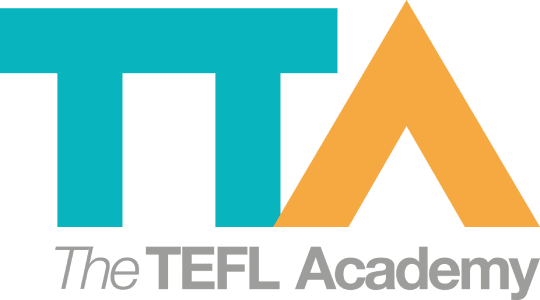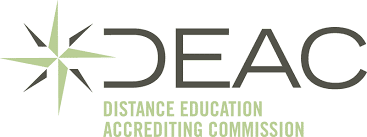What Is Teaching Unplugged And How Do I Do It?
Join a global community of over 200,000 TEFL teachers working throughout the world! Enrol me!
There is more than one way to skin a cat.
While we’re not sure if this saying is actually true when it comes to cats, we do know that it’s true when it comes to teaching English as a foreign language. Over the years, we have developed a number of approaches and methods to teach English which are realised practically in a range of teaching techniques. Some of them are pretty straightforward – the Lexical Approach, for example – while others are a bit more off-the-wall, such as Suggestopedia.
Teaching Unplugged
One such approach is known as Teaching Unplugged, or Dogme.
If you have done a TEFL course and have a bit of experience in the TEFL classroom, you’ve probably been teaching using the Communicative Language Teaching approach. If that’s the case, and you’ve been utilising the Presentation, Practice, and Production lesson planning method, then you might be interested in changing things up a bit in your classroom and giving Teaching Unplugged a go.
Read more: PPP In The EFL Classroom
What is Teaching Unplugged?
Teaching Unplugged is a fairly new movement in the EFL field which supports teaching without materials. Paperless lessons, so to speak. If you can imagine a lesson without coursebooks or photocopies, then you’ve got the right idea.
The basic foundations of Teaching Unplugged and Dogme ELT can be summed up as:
Conversation-driven
Materials-light
Emergent language
Basically, Teaching Unplugged means teaching without preparation in the traditional sense of the word. Instead of spending time preparing for your lesson, your students are the catalyst for your lessons. What happens within the lesson depends entirely on your students.
Teaching should be done using only the resources that teachers and students bring to the classroom—i.e. themselves—and whatever happens to be in the classroom¹.
Essentially, you need to think on your feet during the lesson.
If like most teachers you have focused a lot of your training on lesson preparation, this can be difficult to get your head around.
But don’t freak out!
All you need to take with you into a Teaching Unplugged classroom is yourself, a whiteboard marker, and an open mind. You don’t even decide on the topic. Rather, you let your students decide where the lesson takes you. This is usually topic-based because students can come up with topics to discuss relatively easily. However, it’s also possible to let them decide on a language point they would like to work on.
How do I incorporate Teaching Unplugged into my lessons?
It’s all well and good saying you don’t need to prepare anything, but you do need to prepare yourself!
- Before each lesson, consider the class and their strengths and weaknesses.
- Think about their level and what language points may come up no matter what the topic.
- Take into account what has recently been done in your lessons and so what might work as revision.
Then, walk into the classroom and start talking. It can be on anything and if the students change the topic and talk about something completely unrelated, run with it. In these lessons, the topic doesn’t matter. There doesn’t need to be a link between all parts of your lesson, though invariably you will find there is.
So where does the teaching come in?
To incorporate language into your Dogme ELT lessons, need to assess what they are saying and input better ways of saying it. In other words, as they speak you process their language. At the same time, you draw attention to their mistakes and give them ideas on improvements. This is where your whiteboard comes in. Use your board to take notes on and write explanations for language items.
For example, if you ask your students what they ate for dinner the night before, one student might say:
I went to new restaurant. I never go there before. It was very expensive.
Just from that conversation alone, you can see that there are a few teachable moments here. You could choose to focus on using articles, the present perfect, or even money idioms. You introduce the target language and elicit or give the rules and example sentences and allow your students time to work on a practice activity. This could be coming up with sentences that fit into certain scenarios or even doing a speaking activity that would require them to use the target language.
Once that has been covered adequately – which may take the whole lesson if you want it to – you start a new conversation topic and do it all again.
Coming up with Teaching Unplugged activities
These lessons are not just conversations. Just because you don’t have paper or technology doesn’t mean you have to talk the entire lesson. Come up with activities that can be done without resources to practice any language that comes up. Buzz group discussions, debates, and vocabulary games all work well with these lessons.
What are the benefits of Teaching Unplugged?
The obvious benefit is the lack of a need for materials. This method is great for teachers who don’t have access to loads of resources or who don’t like to use lots of materials. It is awesome for schools that don’t have a photocopier or for teachers who prefer not to burn down an entire forest for one lesson.
Because there isn’t a focus on the syllabus, it allows the teacher to focus on the needs of the learners. A language point can come up which may be above or below their assigned language level but which is pertinent to their current level. This gives the teacher the opportunity to focus on that rather than what is prescribed by a coursebook.
Makes sense, doesn’t it?
What are the drawbacks of Teaching Unplugged?
- Some students and parents won’t understand the Teaching Unplugged teaching method.
They will ask for a coursebook or materials to be included in the lesson, as they prefer the teachers to follow a set plan for lessons. Because there are no materials, it’s easy to see why some people might think the teachers are simply unprepared or winging it.
- Less experienced teachers may feel nervous about teaching without the help of materials.
They may feel they won’t be able to correctly identify appropriate target language for their lessons. They may be wary of having conversation lessons with no real purpose.
- Teachers may worry about running out of activities during the lesson.
Teaching Unplugged requires a lot of on-the-spot thinking. Teachers who don’t feel they are creative may not feel they will be able to construct an effective lesson based on the students’ output.

If Teaching Unplugged sounds a bit more than you can handle, fear not: it’s not as difficult as it sounds. If we break it down to its basics all Teaching Unplugged is telling us to do is go easy on the resources and focus more on the students. We’re always striving to be more student-centered anyway, and Dogme is the perfect way to practice what we preach.
If you’re not comfortable with doing an entire Dogme lesson, test the waters a bit first by allocating 20 minutes or so to doing a Dogme language teaching activity. Once you’ve seen how capable you are of doing that, you’ll graduate to entire lessons in no time. But even doing a few activities Dogme-style will help you make your classes be more learner-centered and less paper-driven.
Let’s face it, paperless lessons can be tricky to implement in the classroom until you (and your students) get the hang of it. It’s a nice way to vary the pace and structure of your lessons and move away from the coursebook. But because these lessons will be tailored specifically to your class, you should find they work exceptionally well.
[Disclaimer: No cats were hurt in the writing of this blog post.]
¹Meddings, Luke, and Thornbury, Scott. (2017). Teaching Unplugged: Dogme in English Language Teaching. DELTA Publishing.
Comments:
Accreditation & Quality Assurance
The TEFL Academy was the world’s first TEFL course provider to receive official recognition from government regulated awarding bodies in both the USA and UK. This means when you graduate you’ll hold a globally recognised Level 3 (120hr) Certificate or Level 5 (168hr) Diploma, meaning you can find work anywhere and apply for jobs immediately.
 United Kingdom
UK
United Kingdom
UK














Would It be advisable to substitute the board by a PC and have students watch TED Talks and other material to generate further discussions?